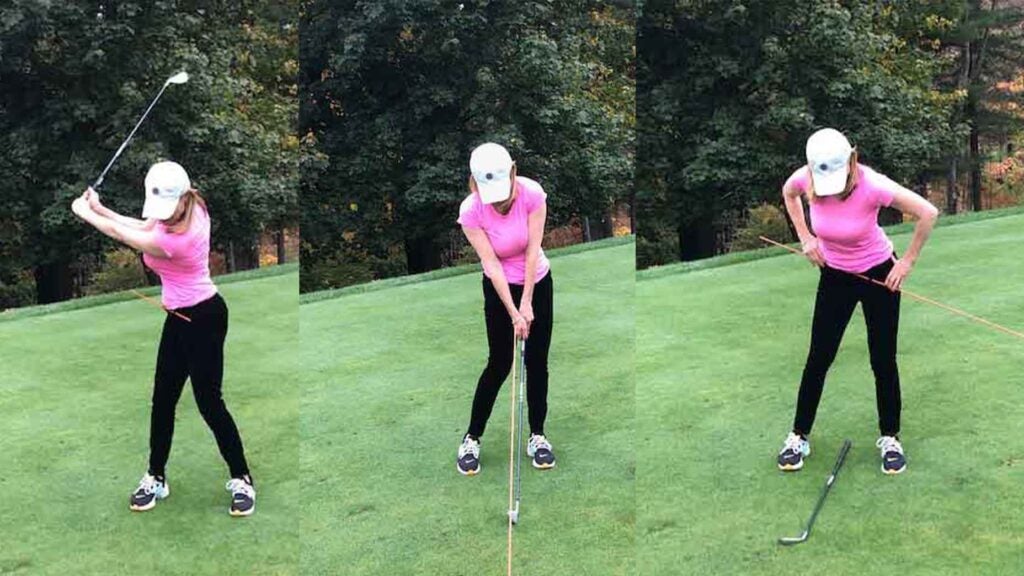Alignment rods are everywhere. They’re easy to buy or borrow, and driving ranges often have them hanging around. Here are three ways to use them to improve your full swing and short game.
Pitching impact
Set an alignment rod in front of the ball and at a slight angle toward the target. With a pitching setup, your task is to mirror the shaft at impact with the alignment rod sticking out of the ground (see photo above). Many will do the opposite, leaning the shaft back at impact — that’s not what you want. You can feel an exaggerated shaft lean forward, if that is an issue, but a slight lean is just fine for solid impact in many of the short-game shots you will face.
A better turn
Put the alignment rod in between your belt loops with a majority of the stick toward your trail side (see photo on left). As you make a backswing, allow the end of the stick to point behind you. If flexibility is an issue, allow movement in the lead knee or foot to aid your body. If you notice the alignment rod moving simply to the side, that is probably too much lateral motion.
Improve your transition sequence
Every player should employ a lateral, rotary and vertical force during the early stages of transition into the downswing. Whether a player has more or less of one or two of these forces is not necessary, just know you should have a version of all three.
With the alignment rod again in your belt loops and the majority of the stick on the lead side (see photo on left), you should feel as though the alignment rod is pointing down to the ground. In order to feel this, your upper body and pelvis could feel like they’re in a free-fall down before the rotation and verticals kick into your swing.
Keep your back facing the target as you feel this move because that feel or move is your initial move to start your transition. If you are a lower handicap, try feeling it before you reach the top of the backswing.
Buy your own set of alignment rods
Callaway Alignment Stix
$19.99
View Product
